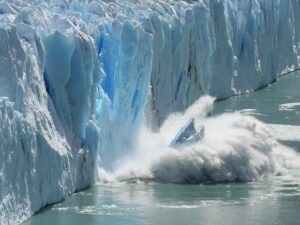 Only a quarter of the world’s glacier ice will remain if global temperatures rise to 2.7°C above pre-industrial levels the path the planet is currently on according to a new study published in the journal Science. The findings come as over 50 countries gather in Tajikistan for the United Nations’ first-ever international conference on glaciers, held against the backdrop of alarming global melt rates.
Only a quarter of the world’s glacier ice will remain if global temperatures rise to 2.7°C above pre-industrial levels the path the planet is currently on according to a new study published in the journal Science. The findings come as over 50 countries gather in Tajikistan for the United Nations’ first-ever international conference on glaciers, held against the backdrop of alarming global melt rates.
The study, conducted by 21 scientists from 10 countries, used eight advanced models to simulate the long-term fate of more than 200,000 glaciers worldwide. The results reveal a stark difference in outcomes depending on the world’s climate action trajectory. Under the current path, with warming expected to reach 2.7°C, only 24 per cent of the 2020 glacier ice mass would survive in the long run. In contrast, if the world manages to cap warming at 1.5°C the Paris Agreement’s target around 54 per cent of global glacier ice could be preserved.
Even at today’s temperatures, glaciers are already committed to losing around 39 per cent of their mass over time due to delayed melt response. However, the study underscores how higher warming thresholds accelerate this process dramatically.
Regional impacts are expected to be even more severe. Iconic and vital glacial regions like the European Alps, Iceland and the Western Rockies of North America may lose up to 90 per cent of their ice at just 2°C warming. In Scandinavia, glacier ice may disappear entirely.
The Hindu Kush Himalaya home to glaciers that feed major rivers relied upon by over two billion people is projected to retain only 25 per cent of its ice if global warming hits 2°C. But that figure could improve to 40–45 per cent with a 1.5°C limit, significantly enhancing regional water and food security.
“Our study makes it painfully clear that every fraction of a degree matters,” said co-lead author Harry Zekollari of Vrije Universiteit Brussel. “The choices we make today will resonate for centuries, determining how much of our glaciers can be preserved.”
Dr. Lilian Schuster from the University of Innsbruck added that glaciers offer some of the most visible evidence of climate change. “But the situation for glaciers is actually far worse than visible in the mountains today.”
In the tropics, the meltdown is already critical. Venezuela has lost its last glacier, and Indonesia’s “Infinity Glacier” is likely to vanish within two years. Germany and Slovenia have also recently lost all their glacier ice.
The conference in Dushanbe saw renewed calls for rapid climate action. “Switching to clean energy to cut planet-warming emissions remains the most effective way of slowing glacial melt,” said Yingming Yang, Vice-President of the Asian Development Bank. He stressed the need for financial support to help vulnerable communities adapt to the mounting impacts including floods, droughts and sea-level rise.
Central Asia’s glaciers, vital for millions along the ancient Silk Road corridor, face similar threats. Only 30 per cent of ice in the region is expected to survive under a 2°C scenario. But limiting warming to 1.5°C could double the retention rate to 60 per cent.
The research offers a sobering reminder that glacier loss will continue for centuries, even after warming stabilises. As glaciers melt rapidly in the near term, they retreat slowly uphill, seeking a new equilibrium.
repeatedly hit by seasonal disasters with devastating consequences.
